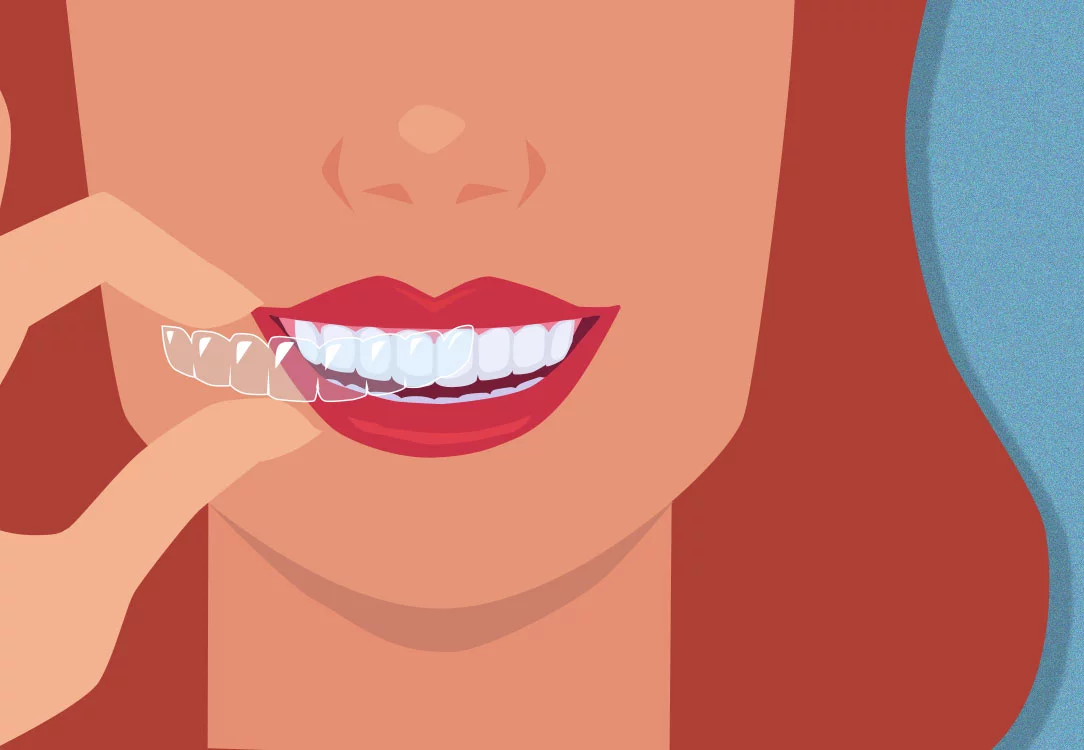Significant advances in cosmetic dentistry have provided multiple options when it comes to getting straight, beautiful teeth; the right option for you is a personal decision that is best made with the support of a qualified, trusted orthodontist.
Invisalign vs. Braces
Both invisible braces, like Invisalign, and traditional braces, can be great options for straightening teeth, depending on your unique needs. Traditional braces are a combination of metal brackets, wires, and rubber bands that are affixed directly to teeth. They are tightened at regular intervals by an orthodontist and are effective for both major and minor corrections to the alignment of teeth.
Invisalign is a brand of clear plastic aligners that are formed based on a mold and imaging of your teeth. This type of aligner can be used as an alternative to braces but may be better suited for minor corrections that don't require significant shifting of the teeth as Invisalign may take longer than braces in those scenarios. Invisalign is one of the only brands of clear aligners that states that their product can address more complicated issues when it comes to straightening teeth.

Advantages of Invisalign
Aesthetic Appeal
No Dietary Restrictions
No Irritation to Other Parts of the Mouth
Ease of Maintaining Good Oral Hygiene
Invisible braces such as Invisalign may also help with oral hygiene; because the trays are removed for eating and drinking and then rinsed before replacing on the teeth, there is not the same risk of plaque and buildup from food stuck in and around the wires of traditional metal braces. Not only are the trays supposed to be rinsed before putting them back in, but teeth should be thoroughly brushed. This gives an extra boost of cleaning and good oral hygiene habits, as you will be brushing after every snack and meal instead of just twice a day as most people do.
Is Invisalign Faster than Braces?
Disadvantages of Invisalign
Inconvenience
Potential Delays in Length of Treatment

Advantages of Braces
Consistency in Complex Cases
Because braces are attached to each individual tooth, they offer a significant advantage when it comes to complex corrections such as a large overbite or underbite. Invisalign may not be able to be used in every case, but braces can, without a doubt, move severely crooked teeth into their proper places to ensure an even, beautiful smile.
Where to Get Invisalign or Braces
Not all orthodontists offer Invisalign treatments, but they all specialize in traditional metal braces. Check with your local Orthodontist.
Alternatives in Traditional Braces
Though not as common, another advantage of braces is a range of options when it comes to positioning and aesthetics. If you’re concerned about how metal braces look but do not want the responsibility or cost of Invisalign, you can choose from a couple of different options in the braces category. Lingual braces are placed on the back of teeth so they won’t be easily visible to others; ceramic braces can be made to match the color of your enamel, so they will be less obvious when applied to your teeth.
Invisalign vs. Braces Cost
How Much is Invisalign with Insurance?
Average Cost of Invisalign Without Insurance
The cost of Invisalign will be based on the length of your treatment, but on average, it will usually cost between $3000 and $7000. It’s important to ask your orthodontist if they are experienced with Invisalign and to get a quote for the service from start to finish. Keep in mind that additional treatment may be needed beyond the actual Invisalign, such as a retainer and other follow-up care.
Braces vs Invisalign Chart

Find an Orthodontist Near Me
Having straight teeth is an important part of a confident, beautiful smile. If your smile is less than perfect, there are many options for getting your teeth set in perfect alignment. Whether you go with Invisalign or traditional braces, be sure to consult your orthodontist to ensure the treatment plan is well-suited for your individual needs. If you’re asking where you can find a capable caring orthodontist near me, check out Smile Generation’s Find a Dentist tool to connect with someone who can guide you to the straight, beautiful smile you’ve always dreamed of.
Find your trusted, local dentist today!
Sources
https://www.invisalign.com/frequently-asked-questions
https://www.invisalign.com/invisalign-cost
https://www.healthline.com/health/best-invisible-braces#options
https://www.verywellhealth.com/everything-you-need-to-know-about-braces-orthodontics-1059352
Smile Generation blog articles are reviewed by a licensed dental professional before publishing. However, we present this information for educational purposes only with the intent to promote readers’ understanding of oral health and oral healthcare treatment options and technology. We do not intend for our blog content to substitute for professional dental care and clinical advice, diagnosis, or treatment planning provided by a licensed dental professional. Smile Generation always recommends seeking the advice of a dentist, physician, or other licensed healthcare professional for a dental or medical condition or treatment.








